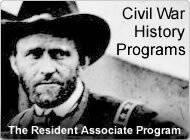
Book Review - Gettysburg's Unknown Soldier, The Life, Death, and Celebrity of Amos Humiston, by Mark H. Dunkelman
The Smithsonian Associates Civil War E-Mail Newsletter, Volume 2, Number 1
"He was found dead on the battlefield at Gettysburg, an unknown soldier with nothing to identify him but an ambrotype of his three children clutched in his fingers."
This is the account of how an ordinary soldier became the most famous enlisted man in the most famous battle of the Civil War. We immediately learn that the soldier was Amos Humiston of the 154th New York Volunteer Infantry, along with many details of Humiston's earlier life. Briefly, Humiston began his career as a harness maker, but soon left home to find adventure as a whaler, then he married a young widow, Philinda Smith, and went back to harness making.
The story shifts to Dr. John Francis Bourns, traveling to Gettysburg to help treat the wounded at the battlefield. When he hears the story of the unknown soldier and the children's picture, Bourns seizes the opportunity of a lifetime with both hands. Bourns initiates what we would call today, a media blitz. He publicizes the story (and himself) widely, recounting the particulars to audiences throughout the North, convincing them that his only mission is to find this poor soul's loved ones!
The Humiston family's celebrity and exploitation began as soon as copies of the picture, related sheet music, and poems were sold with the intention to locate them and to support the orphaned children. Within a month, the soldier's wife and children were located. Philinda Humiston got some money, and eventually a home for war orphans was built. However, human nature being the same then as now, most of the money lined Dr. Bourns' pocket instead. A short ten years after the orphanage was founded it closed, due to mismanagement and alleged child abuse by the last administrator, Rosa Carmichael.
On the surface, this book tells an interesting and little-known story. The image of the dying Union soldier holding his children's picture as he breathes his last upon the battlefield captivates our imagination today, just as it did for people in the North 135 years ago. But on another level, the story is a basic study of human nature. Dunkelman uses 1863 headlines to reveal that this tale of grief, greed, and cruelty is not at all new. That's the bad news. The good news is that, in spite of the public spectacle and exploitation of the Humistons perpetrated by Dr. Bourns, the Humiston story provided much-needed solace during a war that was destroying thousands of families, and that nearly destroyed the nation.

